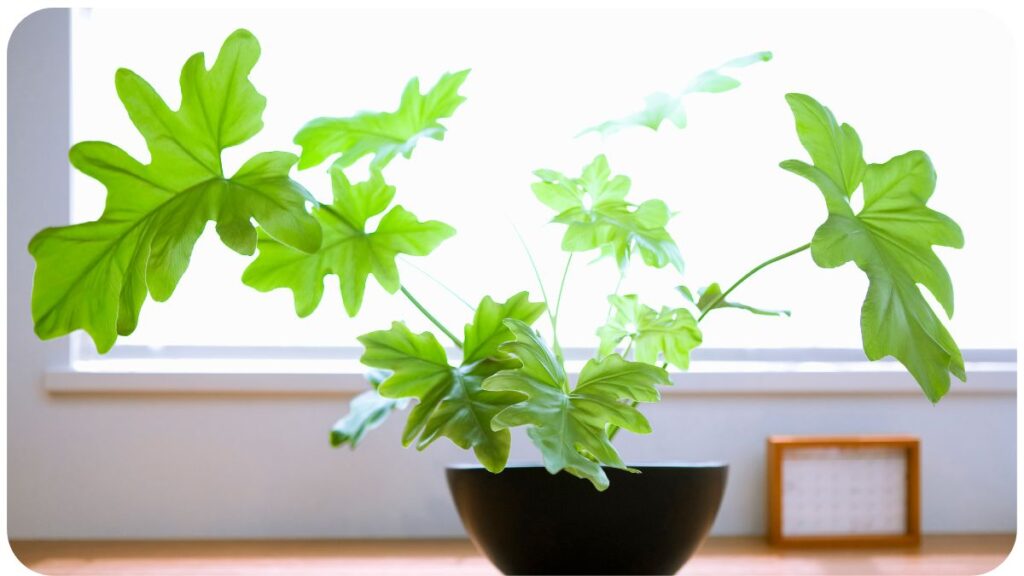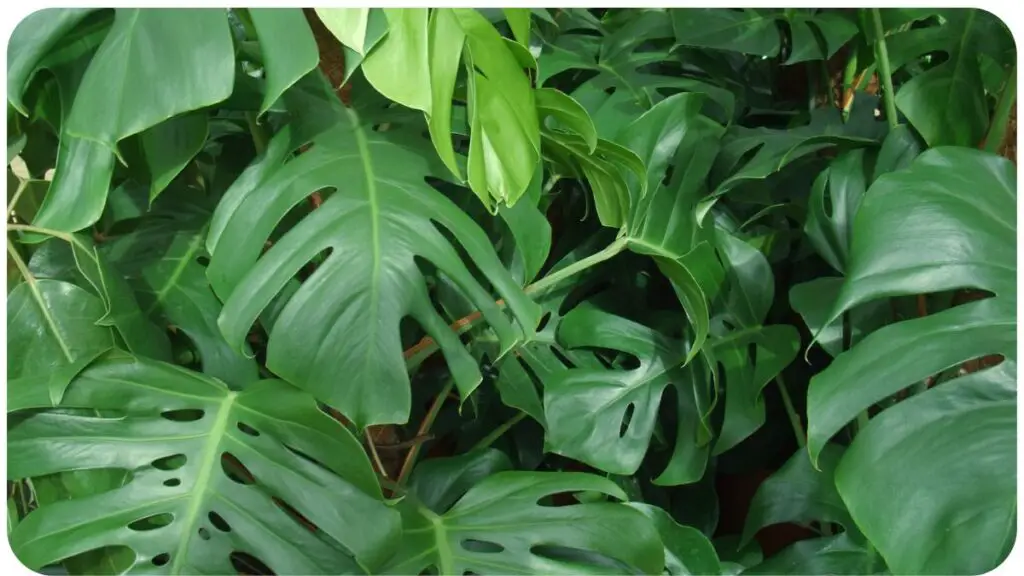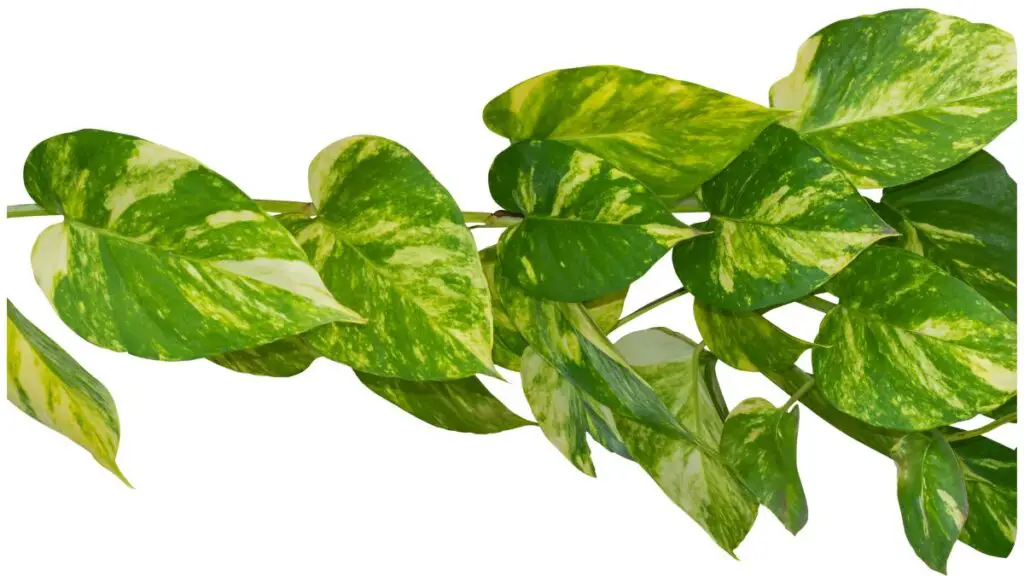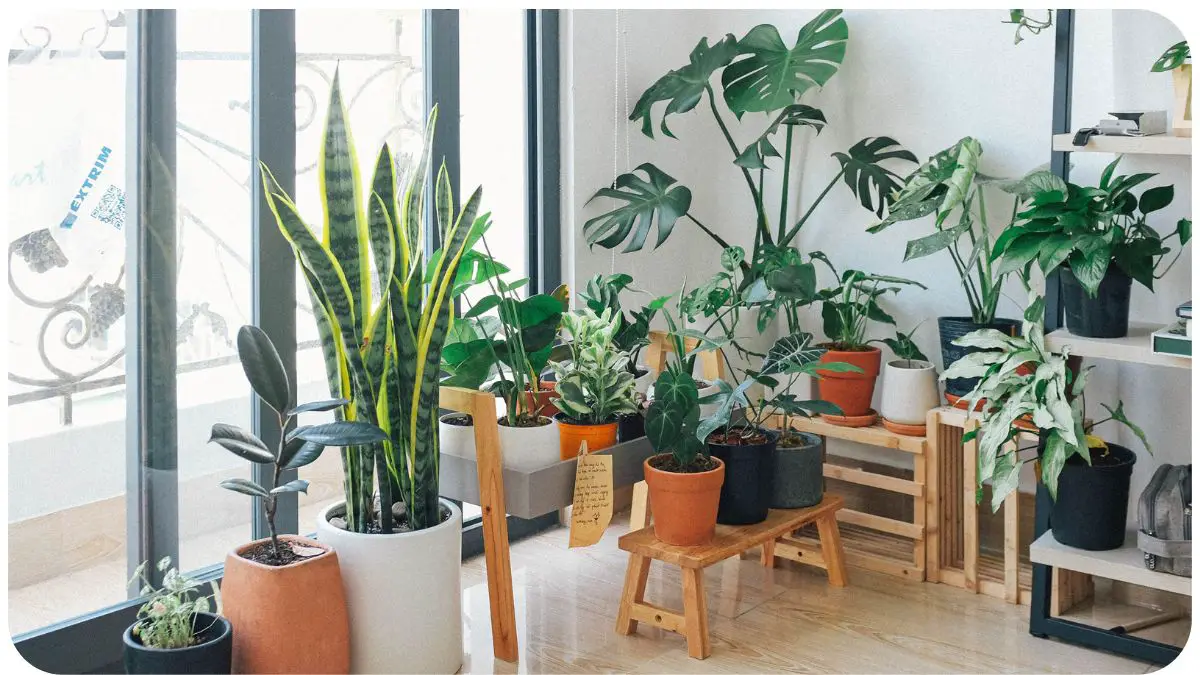When it comes to creating a garden that stands out from the rest, incorporating unconventional plants can add a touch of drama and excitement. While traditional garden staples have their charm, there’s something truly captivating about plants that break the mold. In this article, we’ll explore a variety of unconventional plants that are sure to make a statement in your garden.
| Takeaways |
|---|
| 1. Experiment with unconventional plants to add drama and excitement to your garden design. |
| 2. Balance boldness with restraint by interspersing dramatic plants strategically among more subdued varieties. |
| 3. Consider the scale and proportion of plants to ensure they complement your garden’s size and layout. |
| 4. Create visual interest by pairing contrasting foliage colors, shapes, and textures. |
| 5. Incorporate layers of plants to add depth and dimension to your garden beds. |
| 6. Explore the use of containers to showcase unique specimens and create focal points in your garden. |
| 7. Stay proactive with maintenance tasks to ensure the health and vitality of your unconventional plants. |
| 8. Overcome challenges such as climate compatibility, invasive tendencies, and specialized care requirements through research and proactive management. |
| 9. Enjoy the process of creating a garden that reflects your creativity and individuality, and be prepared to adapt and learn along the way. |
2. Dramatic Foliage Plants

Dramatic foliage plants are the backbone of any bold garden design. These plants boast striking leaves that add texture, color, and visual interest to your outdoor space. Here are some noteworthy examples:
Enhance your garden with vibrant blooms and buzzing pollinators. Discover the joy of nurturing Creating a Pollinator Paradise in Your Backyard. Watch your garden come to life with colorful visitors and thriving plants.
Table: Dramatic Foliage Plants
| Plant Name | Description | Ideal Growing Conditions |
|---|---|---|
| Elephant Ear (Colocasia) | Large, heart-shaped leaves that come in various shades of green, purple, or black. | Partial shade to full sun; moist, well-drained soil. |
| Red Abyssinian Banana (Ensete ventricosum ‘Maurelii’) | Burgundy-red leaves with a tropical vibe, adding height and drama to the garden. | Full sun; rich, fertile soil with good drainage. |
| Black Mondo Grass (Ophiopogon planiscapus ‘Nigrescens’) | Striking black foliage that creates a dramatic contrast in borders and containers. | Partial to full shade; well-drained soil. |
These foliage plants serve as focal points or complementary elements, depending on your garden’s design scheme.
3. Bold Blooming Beauties
While dramatic foliage can steal the show, bold blooming plants add bursts of color and vibrancy to your garden. These plants are sure to attract attention with their stunning flowers and unique blooms. Here are a few standouts:
Table: Bold Blooming Beauties
| Plant Name | Description | Ideal Growing Conditions |
|---|---|---|
| Kangaroo Paw (Anigozanthos) | Unusual, claw-like flowers in vibrant shades of red, orange, and yellow, resembling kangaroo paws. | Full sun; well-drained soil; drought tolerant once established. |
| Bat Flower (Tacca chantrieri) | Mysterious, bat-shaped flowers with long whiskers, surrounded by dark purple or black bracts. | Partial shade; rich, moist soil with good drainage. |
| Bird of Paradise (Strelitzia reginae) | Striking, bird-like flowers in shades of orange and blue, resembling a tropical bird in flight. | Full sun to partial shade; well-drained soil; regular watering. |
These bold blooming beauties add a touch of exotic flair to any garden setting, creating a sense of wonder and fascination.
4. Striking Structural Plants

For a garden that commands attention, incorporating striking structural plants is essential. These plants feature unique forms, shapes, and architectural elements that add drama and intrigue to your landscape. Here are some noteworthy examples:
Maximize your garden space and create a stunning vertical display. Explore the wonders of Tower and Wall Gardens to transform your outdoor oasis. Elevate your garden design with innovative vertical planting solutions.
Table: Striking Structural Plants
| Plant Name | Description | Ideal Growing Conditions |
|---|---|---|
| New Zealand Flax (Phormium tenax) | Sword-like leaves in bold colors such as red, bronze, and variegated patterns, adding height and structure to the garden. | Full sun to partial shade; well-drained soil; drought tolerant once established. |
| Agave (Agave americana) | Large, rosette-forming succulents with spiky leaves and architectural silhouettes, perfect for xeriscapes or modern garden designs. | Full sun; well-drained soil; drought tolerant. |
| Pampas Grass (Cortaderia selloana) | Tall, feathery plumes atop sturdy stalks, creating a dramatic focal point in the landscape. | Full sun; well-drained soil; drought tolerant; regular pruning to prevent spreading. |
These structural plants add a sense of grandeur and sophistication to your garden, elevating its visual appeal and overall impact.
5. Exotic Intruders
Introducing exotic intruders into your garden can transport you to distant lands and evoke a sense of adventure and discovery. These plants hail from far-flung regions and bring a touch of the exotic to your outdoor space. Here are a few captivating options:
Table: Exotic Intruders
| Plant Name | Description | Ideal Growing Conditions |
|---|---|---|
| Japanese Painted Fern (Athyrium niponicum) | Delicate fronds with silver, purple, and green hues, adding a touch of elegance and sophistication to shaded areas. | Partial to full shade; moist, well-drained soil. |
| Persian Shield (Strobilanthes dyerianus) | Vibrant purple leaves with iridescent shimmer, creating a striking contrast against green foliage in borders or containers. | Partial shade; rich, well-drained soil; regular watering. |
| Canna Lily (Canna spp.) | Tropical plants with bold foliage and vibrant flowers in shades of red, orange, yellow, and pink, adding a tropical vibe to any garden setting. | Full sun to partial shade; moist, fertile soil; regular watering and fertilization. |
These exotic intruders infuse your garden with a sense of mystery and enchantment, transporting you to distant lands without ever leaving your backyard.
6. Uncommon Vines and Climbers

To add vertical interest and create a sense of drama in your garden, consider incorporating uncommon vines and climbers. These plants not only add visual appeal but also provide shade, privacy, and habitat for wildlife. Here are a few noteworthy selections:
Experience the magic of your garden after the sun sets. Dive into the world of Cultivating a Sensory Garden After Dark for an enchanting nighttime retreat. Immerse yourself in the sights, scents, and sounds of a sensory wonderland.
Table: Uncommon Vines and Climbers
| Plant Name | Description | Ideal Growing Conditions |
|---|---|---|
| Dutchman’s Pipe (Aristolochia macrophylla) | Large, heart-shaped leaves and unusual, pipe-shaped flowers that attract pollinators and add a touch of whimsy to arbors and trellises. | Partial shade to full sun; moist, well-drained soil. |
| Chocolate Vine (Akebia quinata) | Fragrant, chocolate-scented flowers and attractive foliage that provide excellent coverage for fences, pergolas, and walls. | Full sun to partial shade; well-drained soil; regular pruning to control growth. |
| Climbing Hydrangea (Hydrangea anomala subsp. petiolaris) | Lush, green foliage and fragrant, lacecap flowers that climb vertical surfaces with ease, creating a stunning backdrop for shaded areas. | Partial shade to full shade; moist, well-drained soil. |
These uncommon vines and climbers add vertical dimension to your garden, transforming ordinary structures into living works of art.
7. Tips for Incorporating Unconventional Plants
Now that you’re acquainted with a variety of unconventional plants to add drama to your garden, let’s delve into some tips for incorporating them effectively:
- Consider Your Garden’s Theme: Before selecting plants, think about the overall theme or style of your garden. Are you aiming for a tropical paradise, a contemporary oasis, or a cottage garden? Choose plants that complement your desired aesthetic.
- Balance Boldness with Restraint: While unconventional plants can make a bold statement, it’s essential to strike a balance. Avoid overwhelming your garden with too many dramatic elements. Instead, intersperse them strategically among more subdued plants for a harmonious look.
- Pay Attention to Scale: Take into account the size and scale of your garden when selecting plants. Large, architectural plants may overpower a small space, while delicate specimens might get lost in a vast landscape. Choose plants that are proportionate to your garden’s size for optimal visual impact.
- Create Contrast and Texture: Experiment with contrasting foliage colors, shapes, and textures to create visual interest. Pair bold foliage plants with finer-textured varieties to add depth and dimension to your garden beds.
- Layer Plants for Depth: Incorporate plants of varying heights and forms to create layers within your garden. Tall structural plants can serve as focal points, while medium-sized specimens fill in the middle ground, and low-growing plants carpet the soil. This layering technique adds depth and complexity to your garden design.
- Experiment with Containers: Don’t limit unconventional plants to traditional garden beds. Experiment with containers and planters to showcase unique specimens on patios, balconies, or even indoors. Containers offer versatility and allow you to showcase plants in unexpected ways.
- Stay Mindful of Maintenance: Consider the maintenance requirements of each plant before incorporating them into your garden. Some exotic or uncommon species may have specific care needs, such as humidity levels, pruning requirements, or frost protection. Make sure you’re prepared to meet these needs to ensure the health and vitality of your garden.
By following these tips, you can effectively incorporate unconventional plants into your garden design, adding drama, excitement, and personality to your outdoor space.
8. Overcoming Challenges
While incorporating unconventional plants can elevate your garden to new heights, it’s essential to be aware of potential challenges and pitfalls. Here are a few common obstacles you may encounter:
- Climate Compatibility: Not all exotic or uncommon plants thrive in every climate. Before introducing them to your garden, research their hardiness zones and ensure they’re suitable for your local climate conditions.
- Invasive Species: Some exotic plants have a tendency to become invasive and outcompete native vegetation. Be cautious when selecting plants and avoid introducing species that have a history of invasiveness in your region.
- Specialized Care Requirements: Unconventional plants may have specialized care requirements, such as specific soil pH, water needs, or sunlight preferences. Make sure you’re prepared to provide the necessary care to support their growth and health.
- Limited Availability: Finding uncommon plants may require some effort, as they may not be readily available at local nurseries or garden centers. Consider sourcing plants from specialty growers, online retailers, or plant swaps within gardening communities.
- Cost Considerations: Rare or exotic plants may come with a higher price tag compared to more common varieties. Factor in the cost of acquiring and maintaining these plants when planning your garden budget.
By addressing these challenges proactively and staying informed, you can overcome obstacles and create a thriving garden filled with unconventional plants that captivate and inspire.
Unleash your creativity with unconventional plant displays. Turn ordinary items into extraordinary Creative Planters for your garden oasis. Add a touch of whimsy and personality to your outdoor space with DIY planter projects.
9. Maintenance and Care
Maintaining a garden filled with unconventional plants requires attention to detail and consistent care. Here are some essential maintenance tasks to keep your garden looking its best:
- Watering: Monitor soil moisture levels regularly and water plants as needed, taking into account their individual water requirements. Some drought-tolerant plants may require less frequent watering, while others may need consistent moisture to thrive.
- Fertilizing: Feed your plants with a balanced fertilizer according to their specific needs, typically during the growing season. Avoid over-fertilizing, as this can lead to excessive foliage growth at the expense of flowers or fruit.
- Pruning and Deadheading: Remove dead or damaged foliage and spent flowers to encourage healthy growth and prolong blooming periods. Prune plants as necessary to maintain their shape, size, and overall appearance.
- Mulching: Apply a layer of mulch around plants to suppress weeds, retain moisture, and regulate soil temperature. Organic mulches such as shredded bark or compost also enrich the soil as they decompose.
- Pest and Disease Management: Monitor your plants regularly for signs of pests or diseases and take appropriate action to control infestations. This may include handpicking pests, applying insecticidal soap or neem oil, or using biological controls.
- Winter Protection: In colder climates, provide winter protection for tender or marginally hardy plants. Mulch around the base of plants, cover them with frost blankets or cloches, and consider moving potted specimens indoors during freezing temperatures.
- Dividing and Propagating: Periodically divide overcrowded perennials to rejuvenate them and promote healthy growth. Additionally, explore propagation techniques such as seed sowing, stem cuttings, or division to increase your plant collection.
- Regular Maintenance Tasks: Stay on top of routine garden maintenance tasks, such as weeding, edging, and cleaning up debris. A well-maintained garden not only looks beautiful but also promotes plant health and vigor.
By staying proactive and attentive to your garden’s needs, you can ensure that your unconventional plants thrive and continue to delight you with their beauty and drama season after season.
Achieve lush greenery without breaking the bank. Discover budget-friendly hacks for a Lush Garden Oasis and enjoy the beauty of your garden paradise. Cultivate a thriving outdoor haven without straining your wallet.
10. Conclusion
Incorporating unconventional plants into your garden is a rewarding endeavor that allows you to express your creativity and individuality. Whether you’re drawn to dramatic foliage, bold blooms, striking structures, exotic specimens, or uncommon vines, there’s a world of possibilities to explore.
By following the tips outlined in this article and staying mindful of maintenance and care requirements, you can create a garden that captivates the senses and inspires admiration from all who behold it. So go ahead, unleash your imagination, and let your garden become a masterpiece of botanical beauty and drama.
Further Reading
For more inspiration and information on incorporating unconventional plants into your garden, check out these resources:
- Royal Horticultural Society – Plants to Add Drama: Explore a curated selection of plants recommended by the Royal Horticultural Society to add drama to your garden.
- Fine Gardening – A Cohesive Garden Built from Uncommon Plants: Learn how to create a cohesive garden design using uncommon plants, with expert tips from Fine Gardening.
- Pinder’s Nursery – Unique Plants for Your Garden: Discover a variety of unique plants perfect for adding interest and intrigue to your garden, courtesy of Pinder’s Nursery.
FAQs
What are unconventional plants?
Unconventional plants refer to species that diverge from traditional garden staples, often boasting unique features such as unusual foliage, bold blooms, or striking structural characteristics.
How can I incorporate unconventional plants into my garden design?
To incorporate unconventional plants into your garden, consider your garden’s theme, balance boldness with restraint, pay attention to scale, create contrast and texture, layer plants for depth, experiment with containers, and stay mindful of maintenance requirements.
Where can I find unusual plants for my garden?
You can find unusual plants for your garden at specialty nurseries, botanical gardens, online retailers, plant swaps, and through gardening communities. Explore a variety of sources to discover unique specimens that suit your garden’s style and climate.
What are some challenges associated with unconventional plants?
Challenges associated with unconventional plants may include climate compatibility, invasive tendencies, specialized care requirements, limited availability, and cost considerations. It’s essential to research and address these challenges proactively to ensure the success of your garden.
How can I care for unconventional plants to ensure their health and vitality?
To care for unconventional plants, monitor soil moisture levels, fertilize according to their specific needs, prune and deadhead regularly, apply mulch for weed suppression and moisture retention, manage pests and diseases, provide winter protection in colder climates, and stay on top of routine maintenance tasks.

For 15 years, Hellen James has worked in the gardening industry as an expert and landscape designer. During her career, she has worked for a variety of businesses that specialize in landscaping and gardening from small firms to large corporations.

